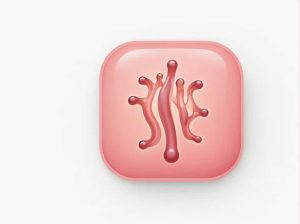A dichotomous key is a tool used in classification to identify organisms objects or substances based on their characteristics. It follows a step-by-step approach where each step presents two contrasting choices leading to the correct identification.
The first question in a dichotomous key is crucial because it sets the foundation for the classification process. It usually focuses on a broad and easily observable characteristic helping to divide the group into major categories before narrowing down to specific identifications.
This topic explores how the first question in a dichotomous key is structured why it is important and how it guides the classification process.
What Is a Dichotomous Key?
A dichotomous key is a series of paired statements or questions that lead to the identification of an unknown specimen. The word “dichotomous” means “divided into two parts” reflecting the key’s structure.
It is widely used in:
- Biology – Identifying plants animals fungi and bacteria.
- Chemistry – Classifying elements or compounds.
- Everyday Use – Sorting objects based on characteristics (e.g. identifying types of rocks).
How a Dichotomous Key Works
- The user starts at Question 1 which presents two contrasting characteristics.
- Based on the answer the user moves to the next step in the key.
- The process continues until the final identification is reached.
Each question helps eliminate incorrect choices making identification more precise.
The First Question in a Dichotomous Key
Why Is the First Question Important?
The first question is the most fundamental division in a dichotomous key. It ensures that the classification begins with a broad but clear distinction making the next steps easier.
A well-structured first question should:
- Focus on a characteristic that is easily observable.
- Divide the group into two major categories.
- Lead to further differentiation with logical steps.
Examples of First Questions in Different Dichotomous Keys
1. Identifying Animals
A common first question in an animal classification key might be:
- Does the organism have a backbone?
- Yes → Vertebrate (move to next question about vertebrates).
- No → Invertebrate (move to next question about invertebrates).
This simple question immediately divides the animal kingdom into two major groups allowing further classification to be more specific.
2. Identifying Plants
For plant classification a first question could be:
- Does the plant have flowers?
- Yes → Flowering plant (Angiosperm) (move to next question about flowers).
- No → Non-flowering plant (Gymnosperm or Ferns) (move to next question about leaves).
This question is effective because flowers are a distinct and easily recognizable feature.
3. Identifying Bacteria
In microbiology a dichotomous key for bacteria might start with:
- Does the bacterium have a Gram-positive or Gram-negative cell wall?
- Gram-positive → Move to questions about shape and metabolism.
- Gram-negative → Move to questions about oxygen use.
Since Gram staining is a fundamental test in microbiology this first question quickly separates bacterial groups.
Characteristics of a Good First Question
To create an effective first question follow these principles:
1. It Should Be Based on a Clear Observable Trait
- Avoid microscopic details if working with visible organisms.
- Use easy-to-see features like color shape size or physical structures.
2. It Should Provide a Logical Division
- The two choices should be distinct and non-overlapping.
- Example: “Does it have wings?” (clear distinction).
- Avoid vague options like “Is it large?” (size can be subjective).
3. It Should Lead to a Natural Progression
- The first question should set the foundation for all following steps.
- Each next question should narrow the classification further.
Common Mistakes in the First Question
1. Using Subjective Terms
- Bad Example: “Is the plant tall?” (height varies with growth).
- Better Example: “Does the plant have needle-like leaves?” (clear distinction).
2. Making Overlapping Choices
- Bad Example: “Is the animal small or medium-sized?”
- Better Example: “Does the animal have fur?”
3. Choosing a Trait That Is Hard to Observe
- Avoid requiring specialized equipment (e.g. microscope lab tests) unless working in a controlled scientific setting.
How to Use a Dichotomous Key Effectively
To successfully identify a specimen using a dichotomous key:
- Start at the First Question – Read both options carefully before choosing.
- Follow the Correct Path – Move to the next question based on your answer.
- Compare with Observable Characteristics – Make sure the choice matches what you see.
- Continue Until an Identification Is Reached – The final answer should match the specimen exactly.
The first question in a dichotomous key is the most important step in the classification process. It lays the foundation by creating a broad division that leads to more specific categories.
A well-designed first question should be clear observable and logically structured ensuring that the classification proceeds smoothly. Whether identifying animals plants bacteria or objects understanding how to use a dichotomous key makes classification easier and more effective.



